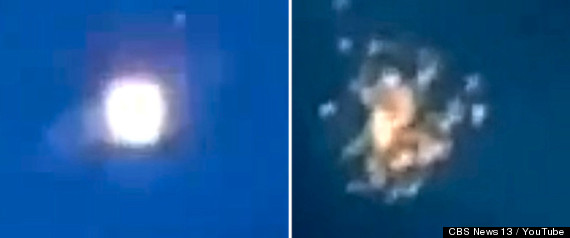Well... probably not.
On December 20, a man named Elijah Prychodzko described as an "amateur astronomer" was looking into the late afternoon sky over Sacramento, CA when he recorded an unusual sight. According to his account, it was a bright light that was hovering, circled by a smaller white light, and then it exploded.
Prychodzko posted a message to his local news station's Facebook page, asking if they wanted to see the video. They did, and aired it later that night.
Let's start with some observations: first, this video would be trivial to fake. Literally child's play. The provenance (a poorly-worded Facebook post) certainly doesn't do the video a great service. I could think of three ways to fake this with practical effects off the top of my head. Or you could do it in about five minutes using CGI.
Prychodzko claims he recorded the video by putting his smartphone camera against the viewfinder. This explains the atrocious quality of the video, but it is also a convenient way to hide any inconsistencies (like dangling wires or obvious CGI-itude) in the source video. It's basically the UFO equivalent of a Blobsquatch.
But let's indulge speculation as if that weren't the case. I would not describe this (as many news outlets have) as an explosion "in space." The sky is clearly blue in the video, and Prychodzko was observing in the late afternoon. Thus, this object was almost certainly inside Earth's atmosphere at the time.
The object is often described as "hovering," but it looks to me as though it is falling. Something bright falling from the sky in broad daylight which then seems to explode… that's not a mysterious object. It could be a chunk of space junk, a daylight (a.k.a. "fireball") meteor, or just a parachute flare.
In fact, I suspect it's a flare. This would explain why it's so bright (by design) and the way it seems to descend slowly (the flare's parachute being either obscured by the bad video quality or edited out by a hoaxer). It would also explain the bright bits that seem to fly off it as it descends (something you frequently see with flares). And it would explain the explosion at the end.
For reference, here's some video I found of a parachute flare being set off during the daytime. As you can see, it looks almost identical to the object Prychodzko (knowingly or not) caught on his telescope.
